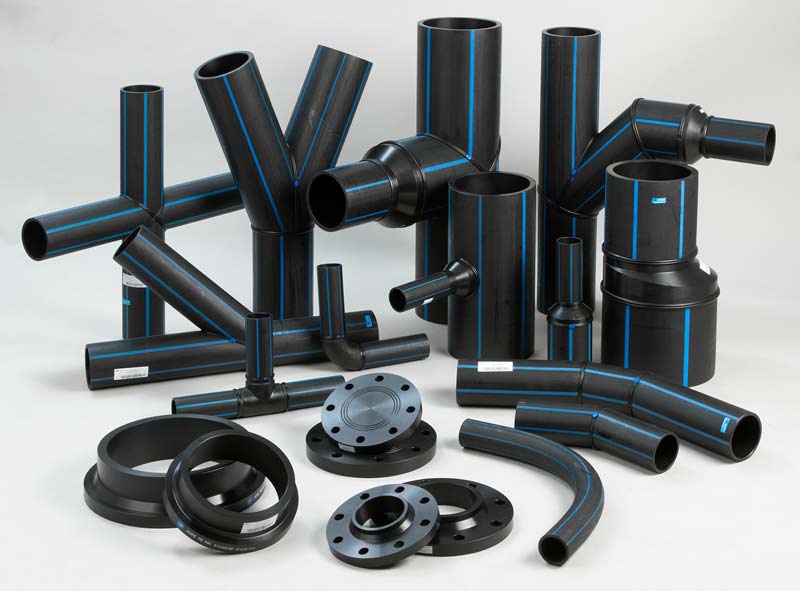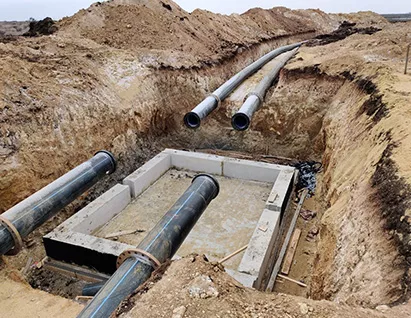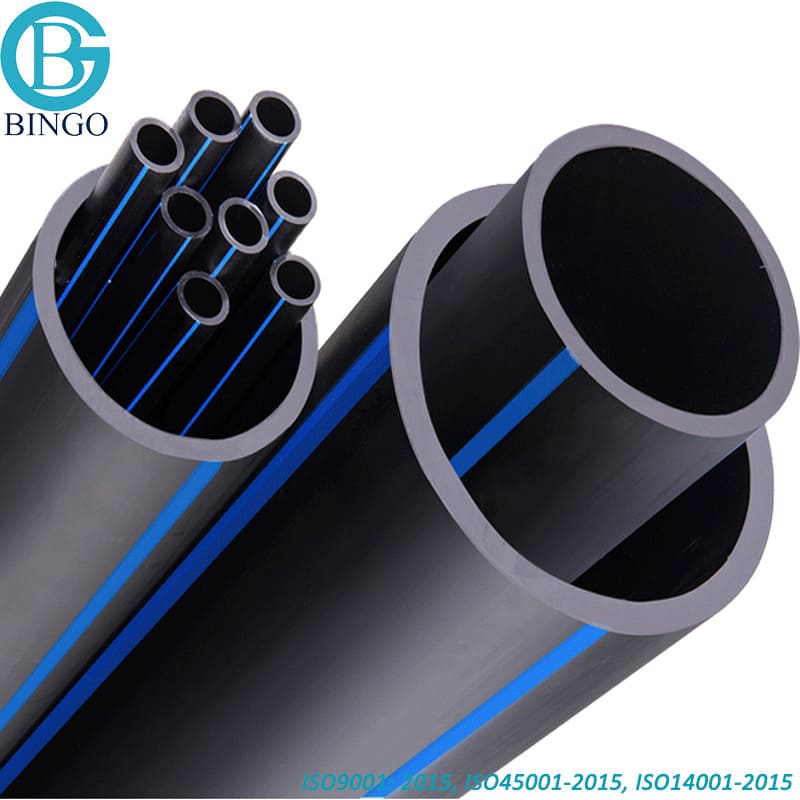Why working with an HDPE Pipe Supplier saves time
Pipeline Manufacturer Limelight: Discover the most effective in the Market for Your Next Job
In the domain of pipeline manufacturing, the selection of maker can considerably influence the result of your project. With a selection of business offering cutting-edge services and innovative products, recognizing the vital requirements for option ends up being important. Sector leaders like Tenaris, Vallourec, and U.S. Steel are at the leading edge of giving lasting and dependable options. Nevertheless, the inquiry remains: what certain factors should assist your decision-making procedure, and exactly how do these suppliers differentiate themselves in a progressively open market? Discovering these aspects may expose understandings that could influence your following task's success.
Sector Overview
In the pipeline manufacturing market, there exists a vibrant interplay of technological improvements and governing requirements that shapes sector practices. This market is essential for the transport of oil, gas, water, and various other liquids, demanding a durable understanding of both product properties and environmental impacts. Manufacturers are progressively incorporating advanced materials and ingenious manufacturing strategies to enhance the toughness and effectiveness of pipelines, guaranteeing they can stand up to differing stress and ecological problems.

In addition, the surge of digital modern technologies has changed traditional manufacturing procedures, enabling improved monitoring and predictive upkeep. This shift not only enhances operational effectiveness but also aids in reducing possible failings before they intensify right into vital concerns. Overall, the landscape of pipeline manufacturing is defined by a continual evolution driven by advancement and conformity, positioning the market for future development and sustainability.
Key Criteria for Choice
Picking the right pipeline producer entails mindful consideration of a number of crucial criteria that guarantee integrity, performance, and conformity with sector standards. First and primary, analyze the maker's experience and credibility within the industry. A reputable firm with a tested track document is more likely to deliver top notch services and products.
Next off, assess the series of products and specifications used. Manufacturers need to give a selection of alternatives that provide to diverse task demands, consisting of various pipe sizes, materials, and covering systems. Compliance with relevant sector criteria, such as ASTM or API, is vital, as it ensures the products meet safety and performance standards.
Furthermore, think about the producer's technological capacities. Advanced manufacturing methods and quality control measures can greatly impact the longevity and efficiency of the pipelines. Customer support and support are also critical; a receptive and experienced team can facilitate smoother task execution and address any kind of worries quickly.
Lastly, assess rates structures and preparation. While cost-effectiveness is crucial, it ought to not endanger high quality. Stabilizing these requirements will bring about a knowledgeable decision that lines up with project objectives and regulatory demands.
Leading Pipeline Manufacturers
In the competitive landscape of pipeline manufacturing, numerous industry leaders stick out for their innovative modern technologies and commitment to sustainability. These top suppliers not only master supplying premium items but likewise focus on ecologically liable techniques in their operations. An introduction of their payments provides important understandings right into the future of pipeline services.
Sector Leaders Introduction
Exactly how do sector leaders shape the pipeline manufacturing landscape? The leading pipeline makers play a vital role in developing sector criteria, driving development, and ensuring quality control throughout the supply chain. Firms such as Tenaris, Vallourec, and U.S. Steel have set criteria for security, sustainability, and performance, influencing not just their operations but also their competitors.
These leaders invest considerably in r & d to enhance product resilience and effectiveness. Their commitment to adhering to regulatory conformity and global requirements promotes consumer count on and encourages industry-wide adoption of ideal techniques. They frequently collaborate with stakeholders, consisting of engineers and construction companies, to assure that their products meet details job demands and environmental factors to consider.
Market leaders likewise prioritize customer partnerships, using tailored services and extraordinary service, which reinforces their market placement. By leveraging economic situations of scale, they can supply competitive rates without endangering top quality. Inevitably, the influence of these makers expands past their items; they form the future of pipeline innovation and manufacturing processes, assuring a sustainable and resistant infrastructure for numerous industries worldwide.
Cutting-edge Technologies Provided
What cutting-edge innovations are changing the pipeline manufacturing industry? Over the last few years, top pipeline makers have actually accepted innovative technologies to improve performance, dependability, and safety and security in their operations. One substantial development is the combination of smart pipeline tracking systems, making use of Internet of Points (IoT) sensors. These systems supply real-time information on pipeline conditions, allowing proactive upkeep and lowering the risk of failures or leaks.
In addition, producers are progressively adopting sophisticated products, such as composite pipelines, which provide improved sturdiness and resistance to deterioration. These materials not only prolong the life-span of pipes but also decrease functional prices over time. Furthermore, additive manufacturing, or 3D printing, is revolutionizing the production process. This modern technology allows for rapid prototyping and personalization of parts, simplifying supply chains and reducing waste.
Expert system (AI) and device knowing algorithms are likewise acquiring traction, optimizing design processes and predictive maintenance routines. By examining huge datasets, these innovations assist identify prospective problems before they occur, enhancing safety and security and operational efficiency. As these cutting-edge modern technologies remain to develop, they promise to shape the future of pipeline manufacturing, making certain that tasks can be finished on schedule and within budget while keeping miraculous security standards.
Sustainability Practices Highlighted
The recurring innovations in ingenious technologies within the pipeline manufacturing industry are matched by a growing focus on sustainability methods among leading producers. These firms are progressively embracing environmentally friendly approaches, minimizing waste, and reducing their carbon impacts throughout the production process.
Leading makers are prioritizing using recycled materials, boosting the lifecycle of their products. By applying closed-loop systems, they effectively utilize sources, thereby reducing the environmental effect linked with resources removal and processing. In addition, numerous companies are purchasing eco-friendly energy resources to power their operations, additionally decreasing greenhouse gas exhausts.
Additionally, pipeline manufacturers are accepting innovative finishes and materials that enhance deterioration resistance and durability, which eventually lowers the frequency of replacements and fixings. These lasting practices not only add to environmental stewardship but likewise straighten with the growing regulative needs and market expectations for responsible manufacturing.
Collaboration with stakeholders to cultivate sustainability initiatives showcases a commitment to a greener future. By focusing on sustainable practices, top pipeline producers are not only enhancing their operational efficiency but also setting a benchmark for industry standards, advertising an extra lasting pipeline framework for all.
Cutting-edge Technologies
The pipeline market is experiencing a transformative shift with the combination of ingenious innovations, especially in advanced materials growth and clever pipeline tracking systems. These improvements not just improve the toughness and effectiveness of pipelines but additionally boost security and environmental stewardship. As makers accept these advanced services, the future of pipeline infrastructure looks significantly appealing.
Advanced Materials Development
Technologies in sophisticated materials growth are reinventing the pipeline manufacturing industry, driving improvements in efficiency, longevity, and performance. The appearance of composite materials and high-strength alloys has made it possible for the production of pipelines that can endure severe conditions, consisting of high stress and destructive settings. These materials not only expand the lifespan of pipes but additionally reduce upkeep costs, eventually bring about boosted operational performance.

In addition, developments in polymer scientific research have actually led to the creation of lightweight, versatile piping systems that are less complicated to deliver and mount. These innovations contribute to lower carbon footprints in pipeline projects, aligning with international sustainability objectives. On top of that, the assimilation of nanotechnology in product growth is opening up brand-new opportunities for improving the mechanical buildings of typical products, causing pipelines that can withstand higher tension while maintaining integrity.
As manufacturers remain to buy research study and advancement, the pipeline industry is witnessing an unprecedented evolution in product capacities. This emphasis on sophisticated materials not just sustains the growing demand for trusted framework however also fosters an affordable landscape where business can differentiate themselves via remarkable product offerings. The future of pipeline manufacturing is certainly linked with these groundbreaking improvements.
Smart Pipeline Checking Equipments
Smart pipeline tracking systems are transforming the landscape of pipeline management by incorporating advanced modern technologies such as IoT sensing units, expert system, and real-time data analytics. Pipeline Manufacturer. These systems make it possible for drivers to keep track of the honesty and efficiency of pipelines continuously, considerably reducing the threat of failings and leaks
With the release of IoT sensors along pipeline courses, drivers collect essential data on temperature level, flow, and pressure prices. This information is transmitted in real-time to central monitoring systems, permitting immediate evaluation and feedback to anomalies. Advanced expert system algorithms examine this information to determine patterns, forecast possible issues, and suggest preventative actions before they intensify right into pricey problems.
The application of wise surveillance systems not only enhances operational effectiveness yet also fosters compliance with regulative criteria. By providing comprehensive reports and understandings, these modern technologies support better decision-making and danger administration. In addition, the integration of device discovering abilities allows systems to boost with time, adjusting to transforming problems and boosting anticipating precision.
As the sector proceeds to welcome these technologies, smart pipeline monitoring systems are positioned to play a crucial role in making certain the safety and security, integrity, and sustainability of pipeline infrastructure. Pipeline Manufacturer.

Case Studies of Success
Success tales within the pipeline manufacturing sector light up the efficiency of innovative remedies and cooperation amongst stakeholders. One remarkable situation is the partnership between a leading producer and an oil company to carry out a modern smart pipeline surveillance system. The job substantially decreased leakage detection times and boosted operational performance, showcasing the value of sophisticated technology in improving safety and minimizing costs.
One more example includes a manufacturer that effectively incorporated sustainable products into their pipeline building and construction. By collaborating with research study establishments, they established a composite product that is not only resilient yet also eco friendly. This advancement not just met governing needs but additionally attracted new customers seeking sustainable remedies.
Furthermore, a pipeline task in a tough geographical region showed the relevance of adaptive engineering methods. The producer worked together with neighborhood designers to design a pipe that can endure severe weather conditions, inevitably preventing service disturbances and ensuring dependability for end-users.
These situation research studies exhibit just how critical collaborations, technological developments, and flexible remedies in the pipeline manufacturing sector cause successful project results, therefore reinforcing the industry's commitment to delivering high-quality framework while attending to customer requires properly.
Sustainability Practices
As the pipeline manufacturing industry develops, the integration of sustainability practices has ended up being increasingly vital. Manufacturers are embracing environment-friendly materials and procedures to reduce their environmental effect while keeping high requirements of quality and safety and security. This shift is driven by both governing demands and an expanding understanding of ecological responsibility amongst stakeholders.
One prominent strategy is the use of recycled products in pipeline manufacturing, which minimizes the need for virgin resources and lowers waste. Companies are likewise spending in energy-efficient manufacturing methods, therefore lowering their carbon impact throughout production. In addition, many makers have actually adopted water preservation techniques, guaranteeing that water use is minimized and wastewater is treated properly.
Additionally, lasting transport methods are being used to supply products, including maximizing logistics to reduce discharges. The commitment to lifecycle evaluations permits makers to evaluate the ecological effect of their products from beginning to disposal, promoting not just sustainability however additionally long-term economic stability.
Ultimately, the adoption of sustainability methods in pipeline manufacturing symbolizes an essential step towards straightening market procedures with worldwide environmental goals, guaranteeing that future tasks are both cutting-edge and liable - American Plastics LLC HDPE Pipeline Manufacturer. - HDPE Pipe Supplier
Future Trends in Pipeline Manufacturing
What technologies are on the horizon for pipeline manufacturing? As the industry develops, a number of key patterns are forming the future of pipeline production. First, the assimilation of advanced products such as composite pipelines promises improved longevity and resistance to corrosion, thereby extending the life expectancy of pipes. These materials not just minimize maintenance costs yet likewise improve safety criteria.

Sustainability remains an essential focus, with suppliers increasingly focusing on eco-friendly methods. The growth of biodegradable materials and the execution of reusing programs are acquiring grip, straightening with worldwide ecological objectives.
Frequently Asked Concerns
What Products Are Frequently Made Use Of in Pipeline Manufacturing?
Common materials used in pipeline manufacturing include carbon steel, stainless steel, polyethylene, and pliable iron (HDPE Pipe Manufacturing Texas). Each product provides unique benefits regarding strength, rust resistance, and viability for numerous applications within the pipeline sector
How Long Does the Pipeline Manufacturing Process Commonly Take?
The pipeline manufacturing procedure generally ranges from a few weeks to a number of months, relying on factors such as material selection, production capability, and personalization needs. Reliable preparation and control can greatly affect the general timeline.
What Are one of the most Usual Pipeline Sizes Available?
The most common pipeline sizes range from 2 inches to 48 inches in diameter. Irregularity exists based on specific applications, industry requirements, and regional needs, guaranteeing flexibility to fulfill diverse task needs and functional requirements.
Are There Warranties Provided on Pipeline Products?
Yes, numerous pipeline producers offer warranties on their products, typically covering product defects and handiwork. The period and regards to these service warranties differ by supplier, so it is vital to examine details plans before purchase.
Just how Do I Make Sure Appropriate Installation of Pipes?
To ensure proper installment of pipelines, follow sector requirements, utilize certified experts, conduct detailed website assessments, apply quality assurance measures, and safe and secure compliance with regulations. Routine evaluations and upkeep even more boost pipeline performance and long life.
Pipeline makers are embracing sophisticated finishings and products that enhance deterioration resistance and durability, which inevitably decreases the regularity of this page replacements and repair services. The pipeline industry is experiencing a transformative shift with the assimilation of ingenious modern technologies, particularly in innovative materials advancement and smart pipeline tracking systems. As manufacturers continue to spend in research and advancement, the pipeline sector is seeing an unprecedented development in product capabilities. Smart pipeline tracking systems are changing the landscape of pipeline administration by incorporating cutting-edge innovations such as IoT sensing units, man-made intelligence, and real-time data analytics. Yes, many pipeline makers supply warranties on their products, commonly covering material flaws and workmanship.